While successive photography of movie frames posed problems for live action films, it is an ideal system for use in single frame animation. The camera includes a filter wheel in front of the lens. Each frame gets three exposures, resulting in blue, red, and green color elements recorded in sequence, as seen in this reproduction of a single frame from Fantasia (1940).
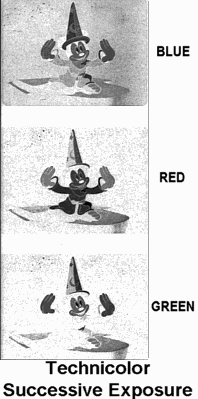
In the Technicolor laboratory the processed negative is step printed to three individual matrix films, one each for the blue, red, and green color records. The "depth" of the film emulsion is somewhat exaggerated for illustration purposes. After processing, all silver is removed from the matrix films, leaving only a gelatin relief map of the original image.
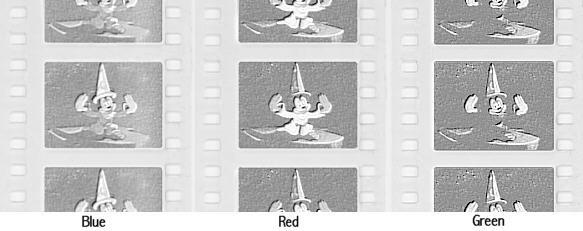
The next step in producing a print is the application of color complimentary dyes to the matrix films. The blue record receives a yellow dye, the red a cyan dye, and the green a magenta dye.
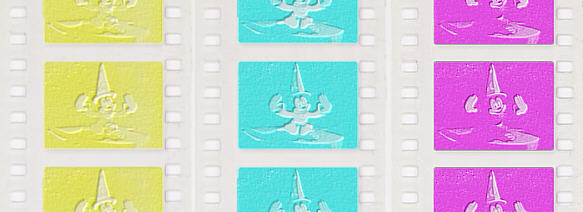
The dyes are absorbed or "imbibed" into the emulsion of the matrix film. The amount of dye will be determined by the density of the image. Again, the "depth" of the emulsion is exaggerated for the purposes of this illustration.
Printing of the dyed matrices is done on a special "blank" printing film. The blank is essentially a black and white film with special chemicals called "mordants" applied that control the absorption of the dyes. Before printing of the color dyes, the film sound track is duplicated onto the film and black frame lines are exposed onto the stock. From 1932 up until about 1945, the blank also received a 50% black and white duplicate of the green record. This increased apparent sharpness of the image and improved contrast.
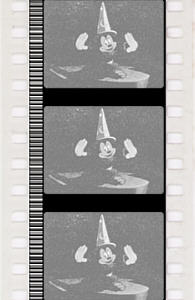
The dyed matrices are brought into contact with the printing blank under pressure and the blank absorbs the dye. The yellow, cyan, and magenta dyes are transferred one at a time.
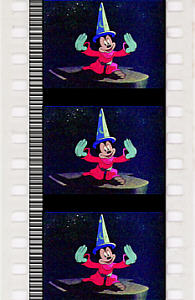
The dye transfer process requires tremendous precision and quality control to produce a tiny film frame that will be blown up tens of thousands of times in projection on large theatre screens. Over the years, at the insistence of Dr. Kalmus, Technicolor continually refined and improved the process.
